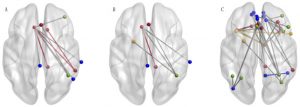Mindfulness and Exercise Reduce Depression in College Students
By John M. de Castro, Ph.D.
“Mindfulness is as popular at colleges nationwide. It’s someone giving themselves uninterrupted mental space. . . It’s a time to stop and refocus your purpose. Studies show the practice may be an antidote to the high levels of stress and depression seen on college campuses.” – Susan Donaldson James
In the modern world education is a key for success. There a lot of pressure on university students to excel so that they can get the best jobs after graduation. The pressure can actually lead to stress, anxiety, and depression which can impede the student’s mental health, well-being, and school performance.
It is, for the most part, beyond the ability of the individual to change the environment to reduce stress, so it is important that methods be found to reduce the college students’ responses to stress; to make them more resilient when high levels of stress occur. Contemplative practices including meditation, mindfulness training, exercise, Tai Chi and Qigong, and yoga practice have been shown to reduce the psychological and physiological responses to stress, relieve anxiety, and reduce depression So, it would seem important to examine various techniques to relieve the stress and its consequent symptoms in college students.
In today’s Research News article “Effects of aerobic exercise, traditional Chinese exercises, and meditation on depressive symptoms of college student: A meta-analysis of randomized controlled trials.” (See summary below or view the full text of the study at: https://www.ncbi.nlm.nih.gov/pmc/articles/PMC7793414/ ) Song and colleagues reviewed, summarized, and performed a meta-analysis of the published randomized controlled trials of the effects of aerobic exercise, meditation, or traditional Chinese exercises on depression, anxiety, and stress in college students. traditional Chinese exercises included tai chi, Baduanjin, qigong, and other mind-body therapies. They identified 44 published trials.
They report that the published trials found that aerobic exercise, meditation, and traditional Chinese exercises all improved depression in the college students. On the other hand, only aerobic exercise produced a significant reduction in anxiety levels and only aerobic exercise and traditional Chinese exercises produced significant reductions in stress.
The findings regarding depression make sense as all three types of interventions have been found to be effective in relieving depression. But previous studies with diverse groups have found that meditation is effective for anxiety and stress and traditional Chinese exercises are also effective for anxiety. So, it may well be that the review included only college students may be responsible for these failures to find significant effects. In addition, there were no studies included that involved the use of meditation for stress and only 2 for the effects of traditional Chinese exercises on anxiety. Regardless, the results clearly show that all three practices are effective in relieving depression.
So, mindfulness and exercise reduce depression in college students.
“Although the research on long-term benefits is still scarce, much of it has shown that long-term mindfulness practitioners tend to have improved health outcomes, enhanced psychological well-being and better attentional function.” – Affordable College Onine
CMCS – Center for Mindfulness and Contemplative Studies
This and other Contemplative Studies posts are also available on Google+ https://plus.google.com/106784388191201299496/posts and on Twitter @MindfulResearch
Study Summary
Song, J., Liu, Z. Z., Huang, J., Wu, J. S., & Tao, J. (2021). Effects of aerobic exercise, traditional Chinese exercises, and meditation on depressive symptoms of college student: A meta-analysis of randomized controlled trials. Medicine, 100(1), e23819. https://doi.org/10.1097/MD.0000000000023819
Abstract
Background:
Non-pharmacological intervention methods such as rehabilitation training or psychological treatment are mostly used in the treatment of depression owing to the limitation of adverse reactions such as drug treatment. However, the best non-pharmacological treatment strategy for depression in college students is unclear. Therefore, it is significant to discover non-drug intervention methods that can improve the depression symptoms of college students.
Method:
Electronic databases as of Sep 15, 2019, were searched, and reference lists and pharmaceutical dossiers were reviewed to detect published and unpublished studies from the date of their inception to Sep 15, 2019. With document quality evaluations and data extraction, Meta-Analysis was performed using a random effect model to evaluate the intervention effect of the aerobic exercise, traditional Chinese exercises, and meditation.
Results:
A total of 44 original studies were included. The random effect model was used to combine the effect values with Standard Mean Difference (SMD), and the results were: aerobic exercise [SMD = –0.53, 95% CI (–0.77, –0.30), I2 = 80%, P < .001], traditional Chinese exercises [SMD = –0.42, 95% CI (–0.74, –0.10), I2 = 90%, P = .01], meditation [SMD = –0.51, 95% CI (–0.90, –0.12), I2 = 79%, P = .01]. There was greater heterogeneity among the included studies: aerobic exercise (I2 = 80%, P < .001), traditional Chinese medicine methods (I2 = 90%, P < .001), and meditation (I2 = 79%, P < .001).
Conclusions:
This study revealed that the depression symptoms of college students can be effectively improved by aerobic exercise, traditional Chinese exercises, and meditation. Aerobic exercise would have a better effect on anxiety and stress while traditional Chinese exercise would have a better effect on stress. Further research (such as high-quality randomized controlled trials and long-term follow-up) is required to evaluate the effects of aerobic exercise, traditional Chinese exercise, and meditation on the depressive symptoms of college students to further apply complementary and alternative therapies.
Ethics and dissemination:
The results of the effects of aerobic exercise, traditional Chinese exercises, and meditation on depressive symptoms for a college student will be reported in a peer-reviewed publication. Hopefully, our findings from this meta-analysis can provide the most up-to-date evidence for the contribution to preventing the occurrence of depressive symptoms in college students.
https://www.ncbi.nlm.nih.gov/pmc/articles/PMC7793414/








